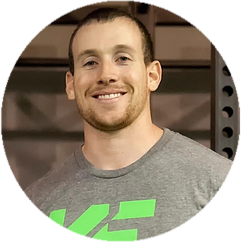 By Dan Kleckner, Special FBA Contributor
By Dan Kleckner, Special FBA Contributor
As I’ve mentioned in previous blog posts, I am a huge proponent of semi-private training and believe it is the most beneficial fitness business model for growth. For the past several years, most new gym franchises that have opened focus on large group training models.
Meanwhile, online training has grown exponentially during the pandemic, making both large group and online training models very crowded spaces.
There are exceptions to the rule, but I highly discourage anyone to open a fitness business built on the large group/class or online-only model. Reasons I believe the semi-private model is superior include:
- The client attrition rate with semi-private training is typically 3% versus 10% with the large group model.
- You can capitalize on the monthly average client spend in the semi-private model, which means you will not need as many total members to meet your profit margin goals.
- The large group training model will be the last model to return to “normal” post-pandemic. It will be some time before you can have 30 people in a class again and some people may never feel comfortable returning to large group training. When my gyms re-opened in June 2020, we saw a huge surge in new clients who did not feel safe in the large group model anymore and were willing to pay more for a smaller semi-private workout.
- You can supplement in-person offerings with online options. We have found success using online platforms for things such as mobility and nutrition sessions.
Here are some recommendations on how to set up a successful semi-private model, so you can maximize your profitability and business success:
Cap your semi-private sessions at 4:1 (4 members to one coach)
I know some gyms do up to 6:1 for semi-private sessions, but I’ve tried several different variations and have found 4:1 to be the best for client experience. 4:1 allows us to still individualize the program and client experience as needed while also being able to charge higher rates.
Use a templated system for programming
For our semi-private training, we use a templated system for our programming and then individualize the template to each client based on their notes. The templated format saves us time because we’re not writing an individual program for every single client, and still allows us to customize the workout and experience to provide the client what they need.
Maximize your schedule
With semi-private training, you can really maximize your schedule and provide flexibility for the client. For example, we offer 10-12 semi-private training times each day for our members and have them sign up for whatever time works best for them versus signing up with a specific coach.
This is also good for retention as it gets your clients used to working with different coaches and if a coach decides to leave, it helps prevent that coach from taking all your clients with them.
Maximize your profit
Semi-private training is more profitable than 1:1 training, allowing you to make more money per hour. For instance, with 1:1 training we’d typically charge around $75-$100/session. However, with semi-private, we charge on average $45/session which allows us to make $180/hour.
Dan is the owner of Kutting Edge Fitness in Kirkland, Washington and Kinetic Fitness in Butte, Montana – two start-up training gyms. He has worked in the health and fitness field for 15 years and holds a B.S. in Applied Health Science from Montana Tech University, where he was also a collegiate athlete.
Dan is a Certified Exercise Physiologist through the American College of Sports Medicine and a level 2 Titleist Performance Institute Golf Fitness Professional. He has been mentored by some of the top golf fitness and fitness business professionals in the country including Thomas Plummer, Rick Mayo, Frank Nash and Jason Glass. He now mentors several start-up gym owners himself. Dan is a well-respected speaker in the greater Northwest and is considered an expert on the business of start-up gyms, improving strength/power for golf and other rotational sports, and small group training.


Join the Conversation!